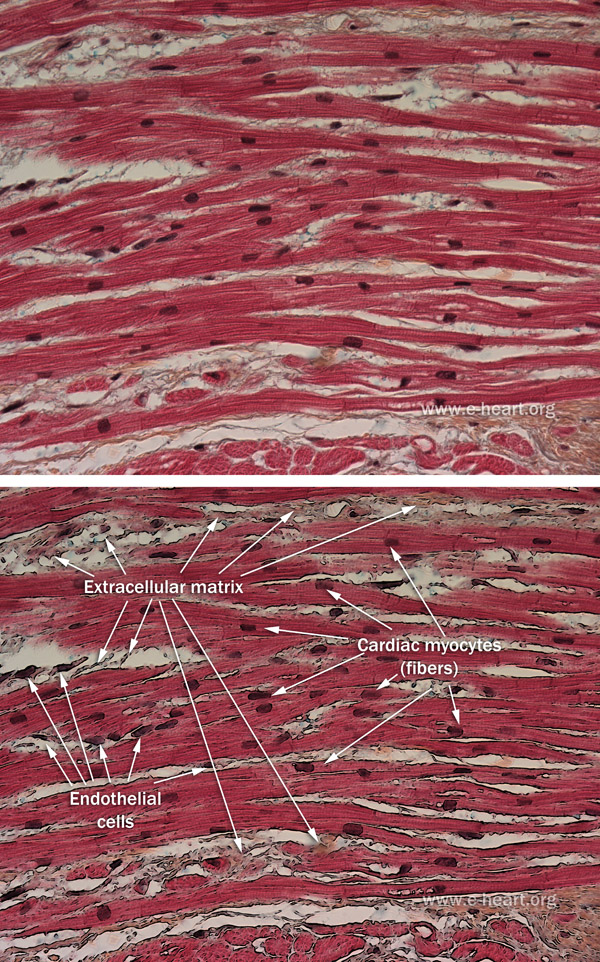Neuron cells

A neuron is known as an electircally charged cell that processes and transmits information by electrical and chemical signaling. Neurons connect to each other to form networks. Neurons are the core components of the nervouse system, which includes the brain and the spinal cord. Neurons are a type of cell that are found in the bodies of most animals.
Myocyte

A myocyte is the type of cell found in muscles that arise from myoblasts. Each myocyte contain long chains of sarcomeres, which are the contractile units of the cell. The forms of myocytes are the skeletal, cardiac, and the smooth muscle ells. The cardiac myocytes generates the electrical impulses that control the heart rate.
Epithelial tissues

The epithelial tissues line the surfaces and cavities of structures throughout the body, and may also form glands. The functions of the epithelial cells include secretion, protection, selective absorption, regulation and exchange of chemicals between underlying tissues, and detection of sensation.The epithelial cells can also be organized into clusters of cells that function as endocrine and exorine glands.

A neuron is known as an electircally charged cell that processes and transmits information by electrical and chemical signaling. Neurons connect to each other to form networks. Neurons are the core components of the nervouse system, which includes the brain and the spinal cord. Neurons are a type of cell that are found in the bodies of most animals.
Myocyte

A myocyte is the type of cell found in muscles that arise from myoblasts. Each myocyte contain long chains of sarcomeres, which are the contractile units of the cell. The forms of myocytes are the skeletal, cardiac, and the smooth muscle ells. The cardiac myocytes generates the electrical impulses that control the heart rate.
Epithelial tissues

The epithelial tissues line the surfaces and cavities of structures throughout the body, and may also form glands. The functions of the epithelial cells include secretion, protection, selective absorption, regulation and exchange of chemicals between underlying tissues, and detection of sensation.The epithelial cells can also be organized into clusters of cells that function as endocrine and exorine glands.

No comments:
Post a Comment